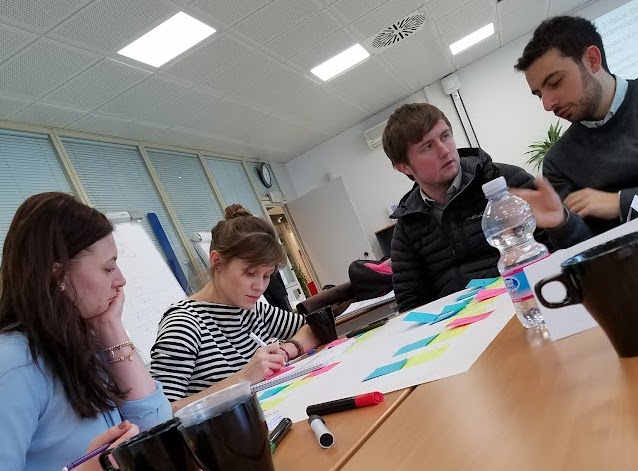Unconscious bias or implicit bias is a term that has been floating around the diversity, equity, and inclusion community for upwards of twenty years. Whether you have heard the term in a workplace training, news article, or in daily conversations, unconscious bias is all around us – and we all have unconscious biases. But what does that really mean? Thankfully, neuroscience behavioral research has provided immense information in recent years that explain the how and why behind unconscious bias
Now, what exactly is unconscious bias? Named both implicit and unconscious bias, this is a subtle cognitive process that begins in the amygdala. It can be further understood as a way to rapidly categorize, as humans are prone to sort people or associate things into groups. The brain processed unconscious bias through, first, the amygdala then the hippocampus, moving to the temporal lobe and then to the media frontal cortex. Beginning in the amygdala, the brain processes billions of stimuli daily forcing our brain to choose what to focus on. Due to the immense amounts of stimuli being processed, our conscious brain is not made aware of everything that is being filtered or categorized.
The unconscious brain filters based on past experiences or instincts, leaving only newer information for the conscious brain to process: these instincts include biases because our conscious brain is not given the opportunity to actively think at the moment, but rather the unconscious brain uses history to categorize the present. Due to the amygdala’s ownership of survival instinct, that which is social but is also being filtered tends to be categorized as ‘like me’ or ‘not like me. This filtering is done on what is deemed the ‘lower level’ of the unconscious.
While the initial categorization that forms unconscious bias happens in the amygdala, other areas of the brain (such as the hippocampus) play a role in establishing unconscious bias. The role of the hippocampus is to “form links between memories and quickly decipher the meaning of data received.” This means that the hippocampus links new information with memories, which can make the brain (and the person) think their understanding of new information is correct when it only feels correct because it is linked to a subjective, familiar memory or experience.
Now, even though information passes through the amygdala and hippocampus first, more explicit bias – such as stereotyping – happens in the left temporal lobe and frontal cortex. This happens due to the fact that the left temporal lobe stores information about people and objects and their associations while the frontal cortex holds emotional responses such as rational thought and empathy.
This is just a simple overview of how neuroscience and its understanding of the brain have informed and outlined the factual foundation of unconscious bias. Beyond the science, there is much more to understand: such as how to identify and address unconscious bias, how to work to lessen the effects, etc. However, none of that can happen without first rooting oneself in the science that gives vocabulary to the ‘why’ of bias.
_______________________
If your team could benefit from learning more about diversity, equity, and inclusion, look into our online courses.
Amy S. Tolbert, Ph.D., and Certified Speaking Professional is the founder and principal of ECCO International (Energizing Cultural Change in Organizations). She specializes in creating inclusive cultures through online courses, keynote presentations, and facilitated workshops and training. She is the author of Reversing the Ostrich Approach to Diversity: Pulling Your Head Out of the Sand.
Recent Articles:
Should Diversity Training Be Illegal?
Are Your Hiring Practices Really Inclusive?
How Do Unconscious Biases Really Work? Neuroscientists have the answer.
Sources:
- Brainard, Michael. LEADERSHIP PITFALLS AND INSIGHTS INTO UNCONSCIOUS BIAS
- Choate, Andrea. Neuroleadership Lessons: Recognizing and Mitigating Unconscious Bias in the Workplace
- Choate, Andrea. Neuroleadership Lessons: Recognizing and Mitigating Unconscious Bias in the Workplace
- Choate, Andrea. Neuroleadership Lessons: Recognizing and Mitigating Unconscious Bias in the Workplace



